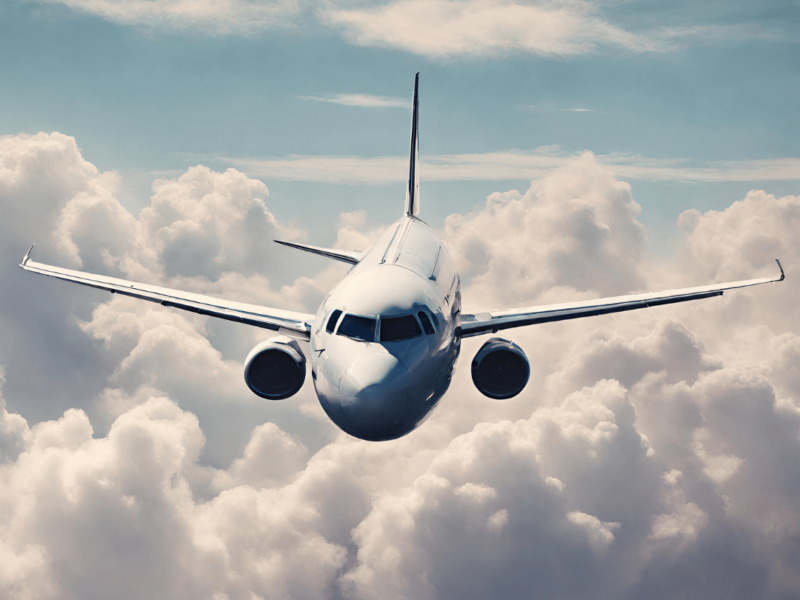The Future of Aerospace: Eight Stories that will Shape the Industry in 2024
Introduction
In the ever-evolving world of aerospace, innovation and technological advancements continue to push boundaries, shaping the way we travel, explore, and connect. As we look to the future, 2024 holds great promise for the industry, with several key developments set to redefine aerospace as we know it. From new aircraft models to groundbreaking research and revolutionary concepts, this article explores eight stories that will shape the aerospace industry in 2024.
The A321XLR: Revolutionizing Long-Haul Travel
One of the most eagerly anticipated stories in aerospace is the arrival of the Airbus A321XLR. Designed to bridge the gap in the market between single-aisle and wide-body aircraft, the A321XLR promises to revolutionize long-haul travel, offering increased range, fuel efficiency, and passenger comfort. This game-changing aircraft is set to open up new routes and possibilities for airlines, providing a viable alternative to the traditional long-haul aircraft while reducing costs and environmental impact.
1. The Rise of Electric Aviation: Clean and Efficient
The aviation industry is undergoing a significant shift towards sustainability, and one of the most exciting developments in this space is the rise of electric aviation. In 2024, we can expect to see continued progress in the development of electric aircraft, with companies such as Boeing and Airbus investing heavily in research and development. The A321XLR is expected to have a significant impact in this area, as its advanced aerodynamics and lightweight structure make it an ideal candidate for future electric propulsion systems.
2. The Future of Supersonic Flight: Faster than Ever Before
The dream of supersonic flight is inching closer to reality, with companies like Boom Supersonic leading the charge. In 2024, we can expect to see the continued development of supersonic aircraft, with the aim of bringing faster-than-sound travel back to commercial aviation. While the A321XLR is not specifically designed for supersonic flight, its advanced technologies and long-range capabilities could pave the way for future supersonic aircraft, opening up a new era of high-speed travel.
3. Aerospace Connectivity: Breakthroughs in Satellite Technology
The aerospace industry heavily relies on satellite technology for communication, navigation, and connectivity. In 2024, we can expect to see significant advancements in this field, with the launch of next-generation satellites designed to enhance connectivity both in the air and on the ground. The A321XLR, with its long-range capabilities, will undoubtedly benefit from these advancements, enabling passengers to stay connected throughout their journey, even on transoceanic flights.
4. Urban Air Mobility: Flying Cars and Beyond
The concept of urban air mobility has captured the imagination of many, promising to revolutionize transportation in urban areas. In 2024, we can expect to see continued progress in the development of flying cars and other vertical takeoff and landing (VTOL) vehicles. While the A321XLR is not directly linked to urban air mobility, its advanced technologies and efficient performance can inspire future developments in this sector, fostering a more interconnected transportation ecosystem.
5. Sustainable Aviation Fuels: Reducing Carbon Footprint
Addressing climate change is a pressing concern for the aerospace industry, leading to a growing emphasis on sustainable aviation fuels (SAFs). In 2024, we can expect to see increased production and utilization of SAFs, with a reduction in carbon emissions. The A321XLR, with its focus on fuel efficiency and reduced environmental impact, is well-placed to benefit from this transition. By incorporating SAFs into its operations, the A321XLR can further enhance its sustainability credentials, reducing its carbon footprint and contributing to a greener future for aviation.
FAQ
Q: What are the key features of the A321XLR?
A: The A321XLR boasts several key features, including an increased range of up to 4,700 nautical miles, allowing operators to explore new long-haul routes. It also offers unbeatable fuel efficiency and reduced operating costs compared to wide-body aircraft, making it an attractive option for airlines looking to improve profitability.
Q: How does the A321XLR contribute to sustainability in the aerospace industry?
A: The A321XLR incorporates advanced aerodynamics and lightweight materials, reducing fuel consumption and carbon emissions. Its improved fuel efficiency aligns with the industry’s goals of reducing environmental impact, making it a more sustainable option for long-haul flights.
Q: Will the A321XLR affect air travel prices?
A: The A321XLR’s operational efficiency and lower operating costs can potentially lead to more competitive airfares for passengers. By improving airlines’ profitability, the A321XLR has the potential to offer affordable long-haul travel options, making it an enticing prospect for travelers.
Conclusion
As we look towards 2024, the aerospace industry is brimming with excitement and anticipation. From the arrival of game-changing aircraft models like the A321XLR to the progress being made in sustainable aviation and supersonic flight, there are numerous stories that will shape the aerospace industry in the coming years. These developments promise to redefine the way we travel, connect, and explore, opening up new possibilities and pushing the boundaries of what we thought was possible. The future of aerospace is bright, and 2024 is set to be a pivotal year in this transformative journey.
Airspace Closure Planned for Paris during next 2024 Olympics Opening Ceremony

